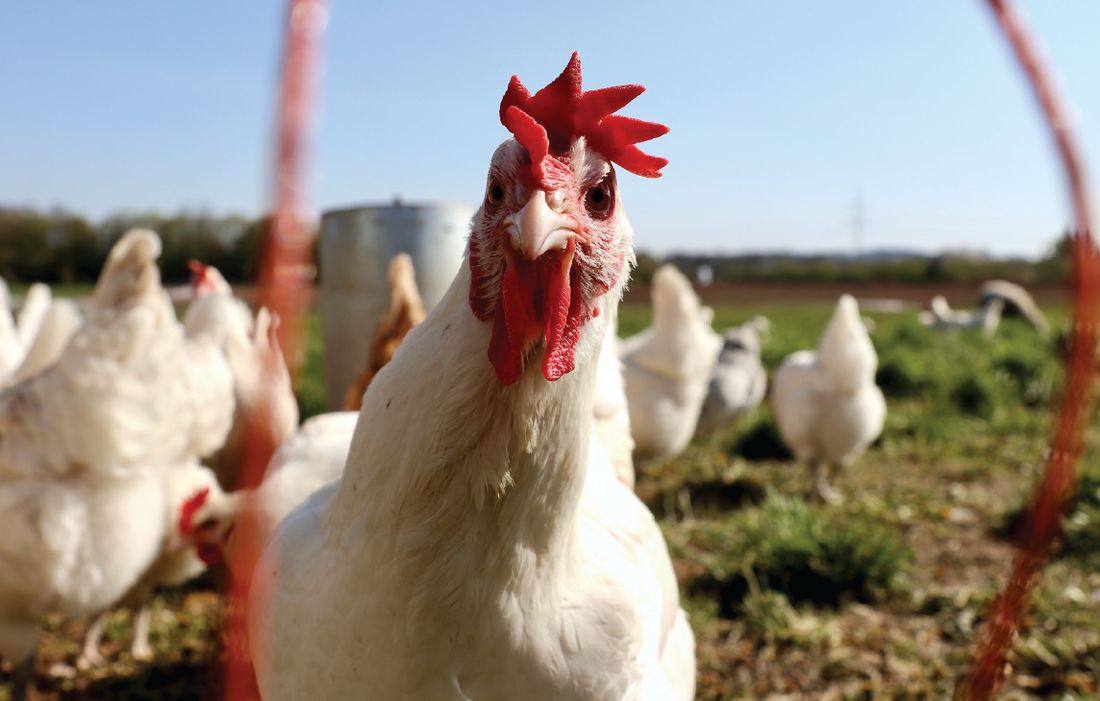
Salmonella Enteritidis - The New Zealand outbreak
Share
A recent outbreak of Salmonella Enteritidis has be reported on the North Island of New Zealand. New Zealand was thought to be free of this bacteria but recent detections in commercial flocks and illnesses have occurred. Poultry, as well as insects, rodents, wild birds and other animals, can carry this bacteria and do not always show signs of disease.
In poultry this disease often goes unnoticed but sometimes clinical signs such as depression, poor growth, weakness, diarrhea and dehydration are seen.
Salmonella can affect anyone but the majority of cases occur in the young and elderly with those that are immune compromised also at risk. Severity depends on: your age, general health and amount of bacteria you ingest.
Symptoms of salmonellosis usually occur between 6 to 72 hours after you ingest the bacteria. The most common symptoms include:
- diarrhoea, which may contain blood or mucous
- fever
- headache
- stomach cramps
- nausea
- vomiting
- dehydration, especially among infants and the elderly.
In rare cases, septicaemia (blood poisoning) may develop as a complication of salmonellosis.
Prevention:
- Cook food thoroughly – especially those derived from animal products such as meat and eggs.
- Don’t eat dirty or cracked eggs
- Keep your kitchen and food preparation surfaces and utensils clean from raw foods
- Store food below 5 degrees Celsius after cooking thoroughly
- Wash hands thoroughly with soap and hot water before and after handling raw meat/eggs and handling other foods
- Wash your hands thoroughly after going to the toilet

Flock Biosecurity:
Pets and farm animals may carry Salmonella bacteria in their feces without having any symptoms. Infection can occur if you do not wash your hands after handling them.
Practicing good biosecurity for your flock can be as simple as just keeping the equipment such as feeders, drinkers, boots/gloves, nest boxes and coops tidy. Regular cleaning will go a long way to keep you and your flock healthy.
Keeping feed/pellets in rodent and wild bird proof containers is a good way of reducing the risk of rats and mice introducing the bacteria into your flock.
Purchasing feed from a feed mill that regularly monitors for Salmonella is helpful, as is sourcing new pullets or chicks from Salmonella free flocks. It is known that salmonella can infect unhatched chicks if the parent stock is infected.

What to do:
Diagnosis involves culturing the bacteria and cloacal swabs can be used. However as there is many different Salmonella species as it is a gut commensal organism. Serological testing can detect exposure as well.
Treatment with antibiotics is possible and with good management it can reduce the occurrence. But effective treatment with antibiotics such as sulphonamides, tetracyclines and amoxicillin may induce or prolong a “carrier state” in some circumstances.
Pre/probiotics can be used as Competitive Exclusion (CE) products that can out compete the Salmonella bacteria for resources in the gut and thus limiting the numbers of this foodborne bacteria. Bacteria such as:
Lactobacillus spp.
Bifidobacterium spp.
Bacillus spp.
Pediococcus spp.
Streptococcus spp.
Some species of these bacteria have shown to have protective effects against Salmonella in chickens. CE works by introducing bacteria into poultry that reduces the incidence and magnitude of Salmonella colonization in the gut. Products with defined bacterial species mixtures preform with greater consistency and more assurance of safety the single or undefined bacterial species mixtures. Protective effects are also higher in the defined bacteria mixtures. While this can be a valuable and powerful strategy it should not be used in isolation to control salmonellae bacteria in your flocks.
CE is the most effective when given to the chicken prior to exposure to pathogens. This usually accomplished at hatch and can be done by oral gavage, spraying on chicks or feed or delivery via the water. As well, even spot treatment of chickens later in life has been shown to enhance the clearance of concurrent or preexisting Salmonella infections. Only live CE products show protective effects and this is maintained by the continuous administration of the probiotics.
So what makes for a good probiotic supplement?
- Defined beneficial bacterial species that have chicken specific research and benefits.
- A mixture of these defined beneficial bacteria.
- A large number of bacteria present. This is counted in CFU and should be labeled on the product.
- Water soluble or easily administered via spray
Avian Empire has produced what we feel is the leading chicken probiotic spray on the market. THE GOOD STUFF PROBIOTIC has the highest bacterial CFU of any probiotic, a mixture of proven bacterial species, delivered in a spray bottle with a fermented kelp medium. Our product ticks all the right boxes when it comes to delivering the best option for gut health and salmonella control for your flock.


